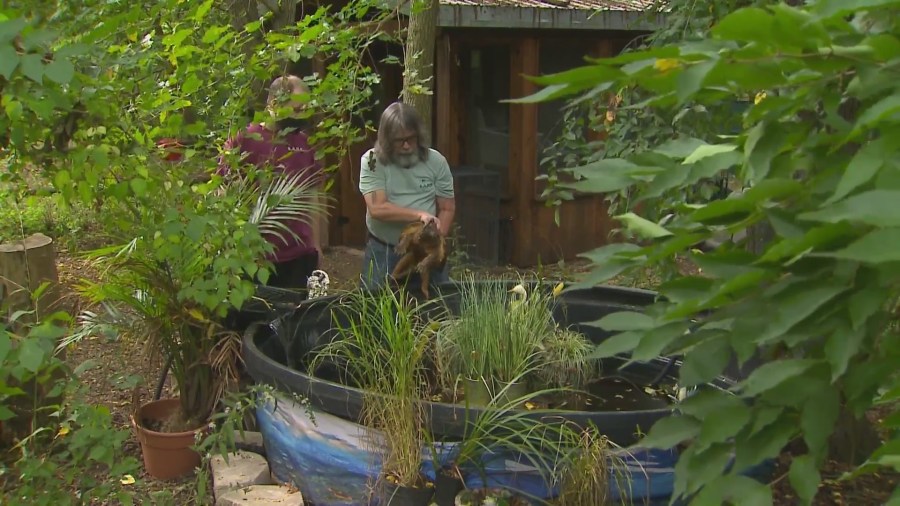KANE COUNTY, Ill. — As wildlife populations decline across the country, so have the number of centers licensed to help them, but one place in Kane County has been quietly fighting to save sick and injured animals for 30 years.
Finding refuge for animals until they can be set free is a full-time job for the volunteers at Kane Area Rehabilitation and Education for Wildlife (KARE), and many of them already have full-time jobs.
“This is nonstop. My phone rings at two o’clock in the morning because someone hit a bird on their way home,” Vicki Weiland, the director of KARE, said. “We had a fox that had a plastic drain pipe around its neck.”
All of the sick and injured animals end up in Vicki’s backyard sanctuary, which for three decades has remained one of the few state and federally-licensed wildlife animal rehabilitation sites in the area.
“Being a Wildlife rehabilitator is just something you do because your soul has you do it. It’s your passion. It’s your life,” Weiland said.
Week after week, the KARE Facebook page documents the arduous journey her team of volunteers faces.
“We run entirely on volunteers and donations. It can be difficult, you know, finding people who actually want to be committed to this,” Weiland said.
Some of the animals that come into the sanctuary have been so badly injured that they can not be released back into the wild.
When that is the case, those animals become part of their education outreach program, which is run by volunteers Liz O’Leary and John Papach.
“My ultimate goal is to get kids excited to help nature instead of destroy nature or take away from nature,” O’Leary, the KARE Education Coordinator, said.
For many, that first encounter is an eye-opening experience.
“Sometimes you see that ‘Ah oh my god, I’ve never seen one up close that is just so awesome!’ And it’s like, that’s, that’s the feeling, that’s how I felt when I started seeing them. That’s why I got involved in this in the first place,” Raptor Consultant John Papach said.
With close proximity to the Fox River, fishing line brings many of the birds of prey and other wildlife in.
‘Water foul, turtles, herons, sandhill cranes, you name it. Anything that goes near the water has appeared to us with just tight, tight, fishing line, and hooks in various spots, stuck,” Weiland said.
Vicki and her team allowed WGN-TV to film their full-time residents that make up their education program but conscientiously kept the latest rescues far from the camera and any unnecessary human interaction.
“Humans are the number one reason we get our animals in,” Weiland said.
The volunteers work hard, but quietly as they nurse injured fawns, coyotes, possums, and even squirrels, back to health.
“You’re not paid for this. You have to do all the paperwork. You have to keep track of the animals. You have to take them to the vet. You have to do what’s needed for the animals and that’s all on you financially,” Weiland said.
Vicki works a full-time accounting job to help cover the costs, which often add up to $2,000 a month. It is a price that she believes is worth it, knowing their work is the path back to the open wild.
“Letting them go is the main reason I’m here,” Weiland said.
While they are protective of limiting human interaction while the animals are healing, every release back into the wild is documented on their Instagram and Facebook pages.
